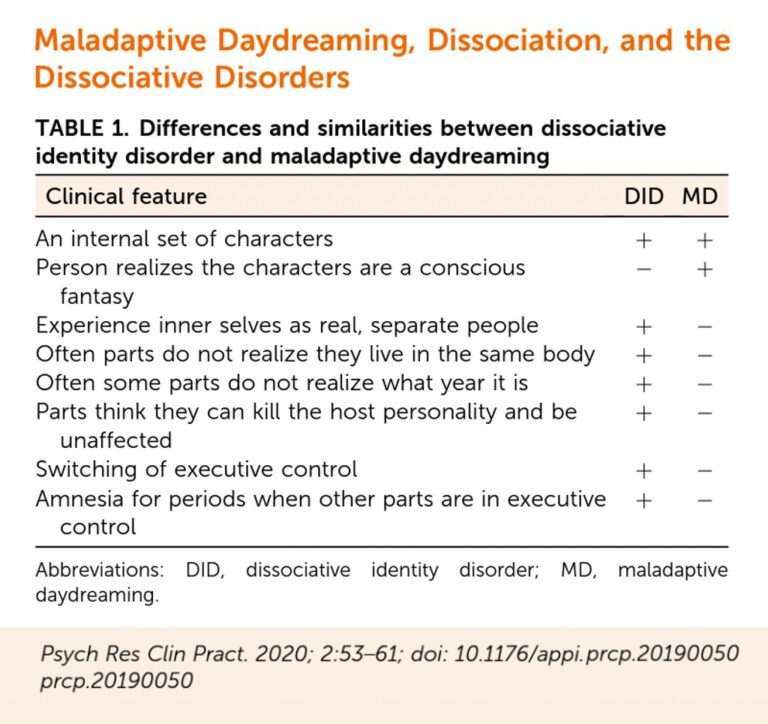The Omniscient Narrator: A Window into Characters’ Thoughts and Feelings
Overview
Definition of the Omniscient Narrator
The omniscient narrator is a narrative technique in which the narrator has complete knowledge and insight into the thoughts, feelings, and actions of all the characters in the story. Unlike other narrative perspectives, such as first-person or limited third-person, the omniscient narrator provides a comprehensive view of the story, allowing readers to understand the motivations and inner workings of multiple characters. This narrative technique offers a unique window into the minds of the characters, creating a rich and immersive reading experience. With the omniscient narrator, readers can delve into the complexities of the characters’ thoughts and emotions, gaining a deeper understanding of their motivations and relationships. By employing this technique, authors can craft intricate and multi-layered narratives that captivate and engage readers. Unifire is a writing tool that can help you master the art of using the omniscient narrator effectively in your storytelling. With its comprehensive features and intuitive interface, Unifire empowers writers to create compelling narratives that resonate with readers. Try Unifire today and unlock the full potential of the omniscient narrator in your writing.
History of the Omniscient Narrator
The history of the omniscient narrator can be traced back to ancient Greek literature, where authors like Homer used this narrative technique to provide a comprehensive understanding of their characters. Throughout the centuries, the omniscient narrator has continued to evolve and be utilized by renowned authors such as Jane Austen and Leo Tolstoy. This narrative perspective gained popularity during the 19th century, as it allowed authors to delve into the inner thoughts and emotions of multiple characters. The omniscient narrator became a powerful tool for storytelling, enabling readers to have a deeper connection with the characters and their experiences. Today, the use of the omniscient narrator remains prevalent in literature, showcasing its enduring impact on storytelling.
Benefits of Using the Omniscient Narrator
The use of the omniscient narrator in storytelling offers several key benefits. Firstly, it allows for a deep exploration of characters’ inner thoughts and emotions, providing readers with a more intimate understanding of their motivations. This narrative perspective also enables the author to reveal characters’ emotions in a nuanced and layered way, enhancing the complexity of the story. Additionally, the omniscient narrator provides valuable insight into characters’ motivations, helping readers to connect with and empathize with them on a deeper level. By employing the omniscient narrator, authors can create a rich and immersive reading experience that goes beyond surface-level descriptions. Unifire is a powerful tool that can assist writers in crafting compelling narratives with the omniscient narrator. With its advanced features and user-friendly interface, writers can easily incorporate this narrative technique into their storytelling. Try Unifire today and elevate your storytelling to new heights!
Character Development
Exploring Characters’ Inner Thoughts
One of the key insights of the article is the importance of exploring characters’ inner thoughts through the use of the omniscient narrator. By delving into the minds of the characters, readers gain a deeper understanding of their desires, fears, and motivations. This not only enhances the readers’ connection to the characters but also adds layers of complexity to the narrative. Through the omniscient narrator, authors can provide insightful commentary on the characters’ thoughts and emotions, allowing readers to engage more fully with the story. By using this narrative technique, authors can create rich and multi-dimensional characters that resonate with readers.
To explore characters’ inner thoughts effectively, authors can employ various strategies. One approach is to incorporate stream-of-consciousness writing, where the narrator reveals the characters’ unfiltered and often fragmented thoughts. Another technique is to use introspective monologues, where characters reflect on their experiences and emotions in a more structured manner. Additionally, authors can utilize symbolism and metaphors to convey the characters’ inner thoughts and emotions in a more indirect yet powerful way. By employing these techniques, authors can delve deep into the minds of their characters and provide readers with a truly immersive reading experience.
To further enhance the exploration of characters’ inner thoughts, authors can also utilize dialogue. By incorporating meaningful conversations between characters, authors can reveal their thoughts, beliefs, and values. This not only adds depth to the characters but also allows readers to witness the dynamics and conflicts that arise from their differing perspectives. By engaging in dialogue, characters can express their inner thoughts and engage in self-reflection, further enriching the narrative.
In conclusion, exploring characters’ inner thoughts through the omniscient narrator is a powerful tool for character development. By delving into the minds of the characters, authors can provide readers with a deeper understanding of their motivations, emotions, and desires. This not only enhances the readers’ connection to the characters but also adds layers of complexity to the narrative. Through various techniques such as stream-of-consciousness writing, introspective monologues, symbolism, metaphors, and dialogue, authors can create multi-dimensional characters that resonate with readers. The omniscient narrator offers a unique window into characters’ inner thoughts, allowing readers to engage more fully with the story and experience a truly immersive reading experience.
To learn more about the art of writing and storytelling, visit Unifire for practical tips, resources, and inspiration.
Revealing Characters’ Emotions
One of the key benefits of using the omniscient narrator is the ability to reveal characters’ emotions in a profound and intimate way. Through the omniscient narrator’s perspective, readers gain access to the innermost thoughts and feelings of the characters, allowing for a deeper understanding of their emotional states. This insight into characters’ emotions adds depth and complexity to their personalities, making them more relatable and engaging. By delving into the emotional landscape of the characters, the omniscient narrator enhances the reader’s connection to the story and creates a more immersive reading experience. William Faulkner, a renowned author known for his exploration of complex emotions, often employed the omniscient narrator to great effect in his works.
Providing Insight into Characters’ Motivations
Understanding the motivations of characters is essential for creating compelling narratives. The omniscient narrator provides an invaluable perspective that allows readers to delve deep into the minds of the characters. Through this narrative technique, authors can reveal the innermost desires, fears, and aspirations of their characters, providing a profound understanding of what drives them. By gaining insight into characters’ motivations, readers can empathize with their struggles and connect on a deeper level. This deep understanding of characters’ motivations adds depth and complexity to the story, making it more engaging and thought-provoking.
Narrative Perspective
Third-Person Omniscient Narrator
The third-person omniscient narrator is a narrative perspective that provides a comprehensive and in-depth understanding of the characters’ thoughts, emotions, and motivations. It allows the reader to have a bird’s eye view of the story, gaining insights into multiple characters’ perspectives. With the third-person omniscient narrator, she can delve into the inner workings of each character’s mind, uncovering their deepest desires, fears, and conflicts. This narrative technique adds richness and complexity to the storytelling, immersing the reader in a multi-dimensional world of emotions and experiences.
Limited Omniscient Narrator
The limited omniscient narrator is a narrative perspective that provides a restricted view into the thoughts and feelings of a select few characters. Unlike the third-person omniscient narrator, who has access to the inner thoughts of all characters, the limited omniscient narrator focuses on a specific character or a small group of characters. This narrative technique allows for a deeper exploration of the chosen characters’ inner worlds, providing readers with a more intimate understanding of their motivations, emotions, and conflicts. By narrowing the narrative lens, the limited omniscient narrator creates a sense of closeness and identification between the reader and the character(s) being observed. This perspective can be particularly effective in creating suspense and tension as readers are only privy to the thoughts and emotions of a limited number of characters. Overall, the limited omniscient narrator offers a unique and nuanced perspective that adds depth and complexity to the storytelling experience.
Multiple Omniscient Narrators
In some narratives, multiple omniscient narrators are used to provide a multifaceted perspective on the story. Each narrator brings their own unique insights and observations, allowing the reader to see the events from different angles. This technique adds depth and complexity to the narrative, as the reader gains a more comprehensive understanding of the characters and their motivations. By presenting multiple omniscient narrators, the author creates a rich tapestry of viewpoints that enhances the reader’s engagement with the story. The use of multiple omniscient narrators can also create interesting dynamics between the characters, as their individual perspectives may conflict or complement each other. Overall, the inclusion of multiple omniscient narrators adds a layer of richness and complexity to the narrative, making it a compelling storytelling technique.
Conclusion
The Power of the Omniscient Narrator
The omniscient narrator holds immense power in storytelling, allowing readers to delve deep into the minds of characters and experience their thoughts and emotions firsthand. Through the omniscient narrator’s perspective, readers gain a comprehensive understanding of the characters’ innermost desires, fears, and motivations. This narrative technique creates a profound connection between readers and characters, immersing them in the story and enhancing their reading experience. By using the omniscient narrator, authors have the ability to provide a unique and insightful window into the human psyche, giving voice to the unspoken and unraveling the complexities of the human experience.
Enhancing the Reading Experience
The omniscient narrator plays a crucial role in enhancing the reading experience by providing a unique perspective on the story. By having access to the thoughts and feelings of multiple characters, the reader gains a deeper understanding of their motivations and emotions. This allows for a more immersive and engaging reading experience, as the reader is able to connect with the characters on a more personal level. Additionally, the omniscient narrator can create suspense and tension by revealing information to the reader that the characters themselves may not be aware of. This adds an element of intrigue and excitement to the story, keeping the reader hooked until the very end. Overall, the omniscient narrator adds depth and complexity to the narrative, making it a valuable tool for authors and a captivating experience for readers.
Future of the Omniscient Narrator
The future of the omniscient narrator holds great potential for enhancing the reading experience. As technology continues to advance, new storytelling techniques and mediums are emerging, allowing for even more immersive and interactive narratives. One exciting development is the use of AI-generated narratives, where the omniscient narrator can dynamically adapt the story based on reader preferences and feedback. This personalized approach to storytelling has the potential to create a truly unique and engaging reading experience. Additionally, with the rise of virtual reality and augmented reality, the omniscient narrator can transport readers into vivid and lifelike worlds, providing a written equivalent of a cinematic experience. The possibilities for the future of the omniscient narrator are vast, and it will be fascinating to see how this narrative technique continues to evolve and push the boundaries of storytelling.
In conclusion, Unifire is the perfect tool for extracting summaries, keywords, and titles from your podcast and repurposing your content. With Unifire, you can save time and effort by automating the process of creating engaging content. Whether you’re a podcaster, content creator, or marketer, Unifire can help you optimize your content and reach a wider audience. Try Unifire today and take your content to the next level!







